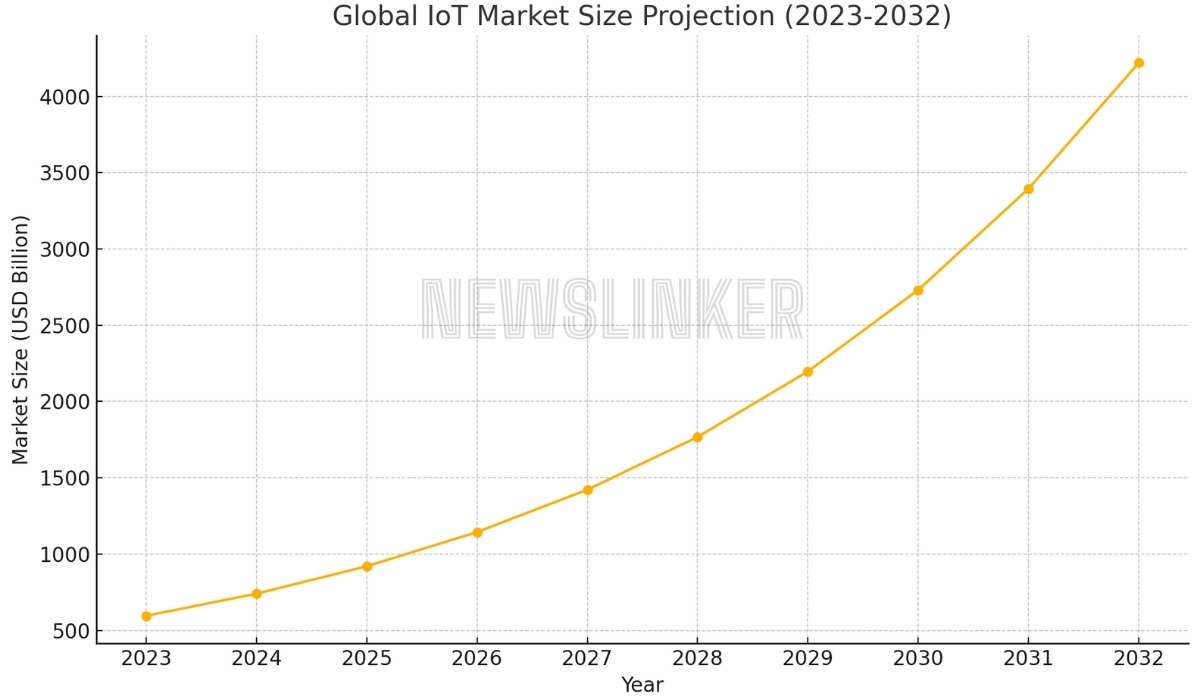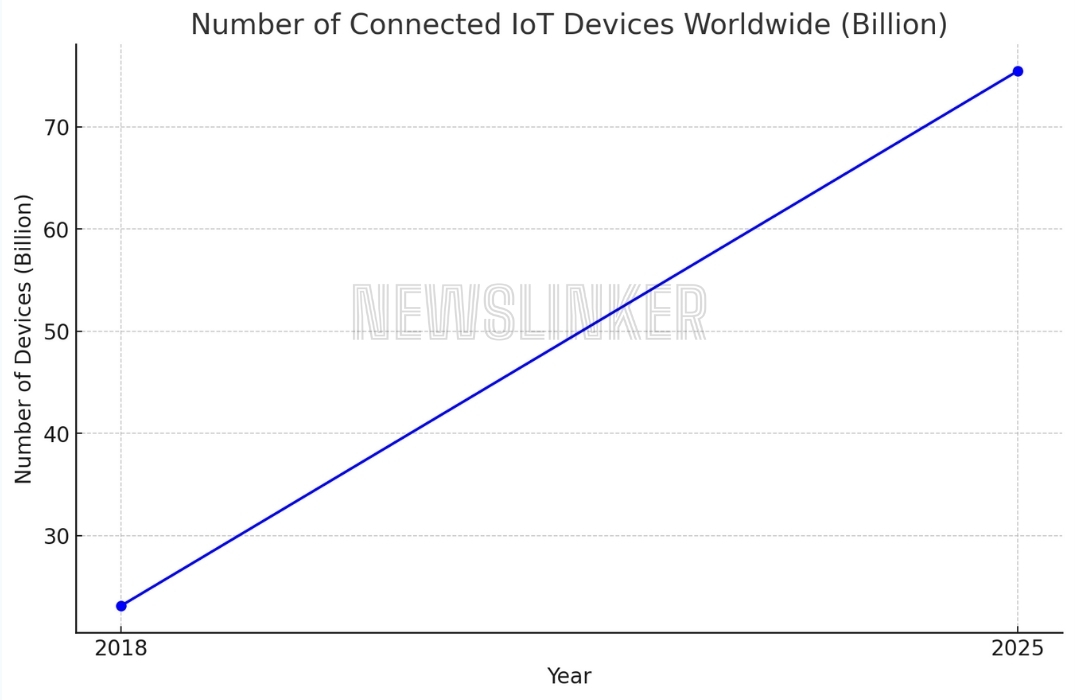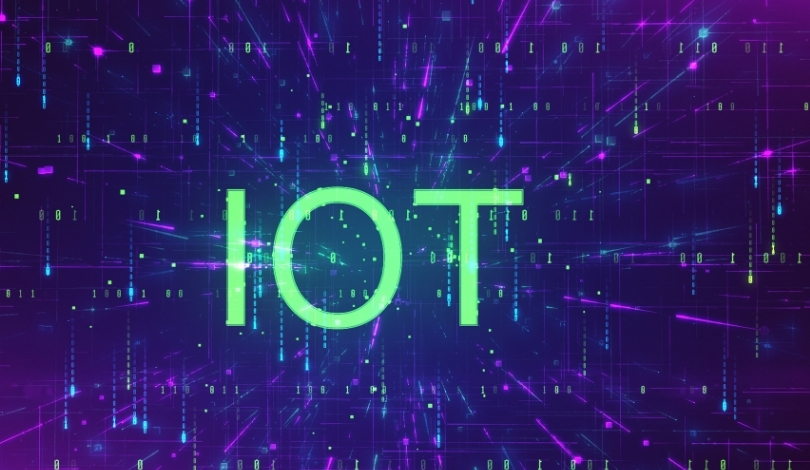The Internet of Things (IoT) is a transformative technology reshaping the way people, organizations, and industries operate. By connecting everyday physical devices to the internet, IoT enables the seamless exchange and collection of data, facilitating automation, enhancing efficiency, and creating new opportunities for innovation.
What is IoT (Internet of Things)?
The Internet of Things (IoT) refers to a vast network of physical objects embedded with sensors, software, and other technologies designed to connect and exchange data with other devices and systems over the internet. These “smart” objects range from household items like refrigerators and thermostats to sophisticated industrial tools and healthcare devices. The primary objective is to gather data in real-time, analyze it, and convert it into actionable insights.
How Does IoT Work in Steps?
Understanding the intricacies of how IoT functions requires breaking it down into four fundamental components:
1. Sensors/Devices: These collect data from the environment. This data could range from simple readings like temperature to complex inputs such as a video feed.
2. Connectivity: Collected data is sent to the cloud via various connectivity options, including WiFi, Bluetooth, cellular networks, and more.
3. Data Processing: Once the data reaches the cloud, software processes it. This can involve simple checks or more complex operations like real-time video analysis.
4. User Interface: The processed data must be made useful to the end-user. This can be through alerts, dashboards, or automated actions triggered by preset rules.

What is an IoT Example?
Consider a smart home system. It integrates various IoT devices like smart thermostats, light bulbs, security cameras, and refrigerator sensors, all controlled through a unified platform. Users can manage their home environments remotely via smartphone apps, adjust settings based on real-time feedback, and receive alerts about security-related events.
What is the Purpose of IoT?
IoT aims to enhance the efficiency and effectiveness of operations, both in personal and industrial contexts. By harnessing real-time data, these systems can predict issues before they arise, automate routine processes, and provide insights that were previously unattainable. From smarter homes to more efficient factories, the potential applications are vast and diverse.
What is the Concept of IoT?
The core concept of IoT revolves around interconnectivity—the ability of multiple devices to communicate and collaborate via the internet. This network of connected devices functions autonomously to gather data, process it, and take appropriate actions based on predefined rules or machine learning algorithms, all without human intervention.
How is IoT Used Today? Where is IoT Used in Daily Life?
IoT applications span multiple domains:
- Smart Homes: Devices like smart thermostats, security systems, and intelligent lighting provide convenience and energy savings.
- Healthcare: Wearables and remote monitoring devices track patients’ health metrics, enabling timely interventions.
- Transportation: Smart navigation and traffic management systems optimize routes and reduce congestion.
- Agriculture: IoT-enabled sensors monitor soil and weather conditions, improving crop yields and reducing water usage.
- Manufacturing: Machine-to-machine communication enhances production efficiency and predictive maintenance.
What is the Market Size of IoT?
The IoT market is substantial and growing. As of 2023, the global IoT market size was valued at USD 595.73 billion and is projected to reach USD 4,062.34 billion by 2032, growing at a compound annual growth rate (CAGR) of approximately 24.3% from 2024 to 2032.

How Much is the IoT Industry Worth?
On a broader scale, the industrial segment of IoT is expected to substantially impact the economy, with estimates projecting this sector could be worth USD 4,062.34 billion by 2032.
How Profitable is IoT?
The profitability of IoT stems from its ability to transform business operations through efficiency gains, cost reductions, and new revenue streams. Industries leveraging IoT, such as smart manufacturing, healthcare, and smart cities, stand to gain significantly. According to various reports, the return on investment in IoT solutions is strong due to operational cost savings and enhanced productivity.
How many IoT devices are there in the world?
The data shows a significant increase from 23.14 billion devices in 2018 to a projected 75.44 billion devices by 2025. This growth reflects the continuous improvement in device design, implementation, and operation, alongside the rise of services and applications driving down costs and boosting production. Here is the graph illustrating the number of connected IoT devices worldwide.

Can IoT Work Without Internet?
Interestingly, IoT can function without being constantly connected to the internet. Devices can communicate over local networks using protocols like Bluetooth or ZigBee and perform basic processing locally. However, to leverage cloud analytics and broader control, an internet connection is generally beneficial.
Why Do We Need IoT? & Why is IoT Important?
IoT enhances our ability to monitor and manage our environments efficiently. It brings automation to repetitive tasks, offers real-time insights, and improves decision-making across various sectors, thereby driving innovation and improving quality of life and business operations.
IoT is crucial due to the transformative capabilities it offers. It revolutionizes industries by enabling smart solutions that improve efficiency, reduce costs, and open new business opportunities. The real-time data collected by IoT devices can anticipate issues, prevent downtimes, and optimize resource usage, substantially benefiting societies and economies.
In today’s digital era, understanding IoT and its implementation is vital as it becomes increasingly integrated into various aspects of our daily lives and industries. IoT represents a significant leap in technology, offering vast potential to improve efficiency, productivity, and quality of life. Whether in smart homes, healthcare, agriculture, or industrial settings, IoT drives innovation, automation, and smarter decision-making, making it a pivotal technology for the future. The market for IoT is enormous, promising continued growth, economic impact, and transformational changes across all sectors.
The Latest Scientific Publications on IoT
The paper “BPNN-based flow classification and admission control for software defined IIoT“, published in IET Communications in July 2024, introduces an innovative Flow Admission Control (FAC) approach that aims to optimize service demands and maximize network utilization in software defined Industrial Internet of Things (IIoT). The proposed method addresses challenges such as access delays and service outages due to multiple connection requests. Researchers employed a back propagation neural network to classify incoming flows into various priorities based on real-time network status. Subsequently, the bandwidth and buffer size were estimated using a stochastic network calculus model. This dynamic approach adjusts FAC thresholds, unlike traditional static priority systems, ensuring real-time processing. Simulation results indicate that this novel FAC scheme significantly reduces transmission delays and enhances network utilization, outperforming existing methods. The study underscores the potential of machine learning and stochastic modeling in meeting the stringent demands of software-defined IIoT networks.
Low-Power Wide-Area Network (LPWAN) technologies, such as LoRa, are increasingly being adopted in agriculture due to their extensive range and power efficiency. However, the energy consumption of LoRa wireless sensor networks is significantly influenced by transmission parameters like carrier frequency, bandwidth, transmit power, spreading factor, and coding rate. Incorrect parameter selection can drastically reduce battery life, necessitating frequent replacements—a costly and inconvenient scenario for field deployments. A recent study “Machine learning deployment for energy monitoring of Internet of Things nodes in smart agriculture“, published in International Journal of Communication Systems in Jun 2024, introduces a machine learning-based web application designed to monitor the energy consumption of end nodes in LoRa wireless sensor networks. The research tested 12 regression models, including Linear, Random Forest, K-Nearest Neighbours, Decision Tree, Support Vector, Lasso, Ridge, AdaBoost, Gradient Boost, XGBoost, CatBoost, and LightGBM models. The LightGBM model emerged as the most accurate in predicting the energy consumption of IoT nodes and was thus chosen for the web application. This innovative application can be integrated into programmable LoRaWAN gateways, providing an efficient tool for monitoring and optimizing the energy consumption of IoT end nodes in the agricultural sector. This advancement promises to enhance the longevity and reliability of field-deployed devices, reducing maintenance costs and improving operational efficiency.










